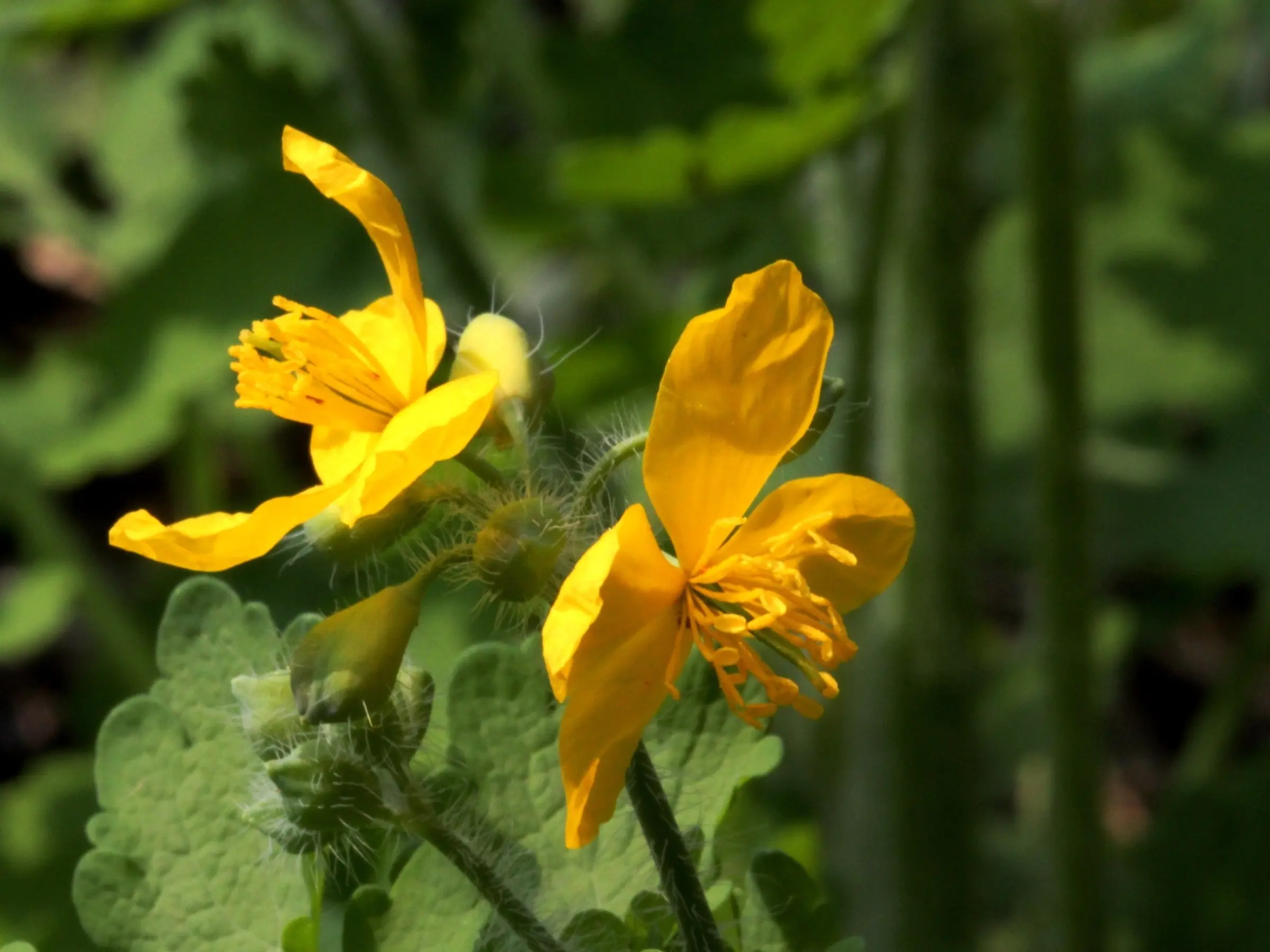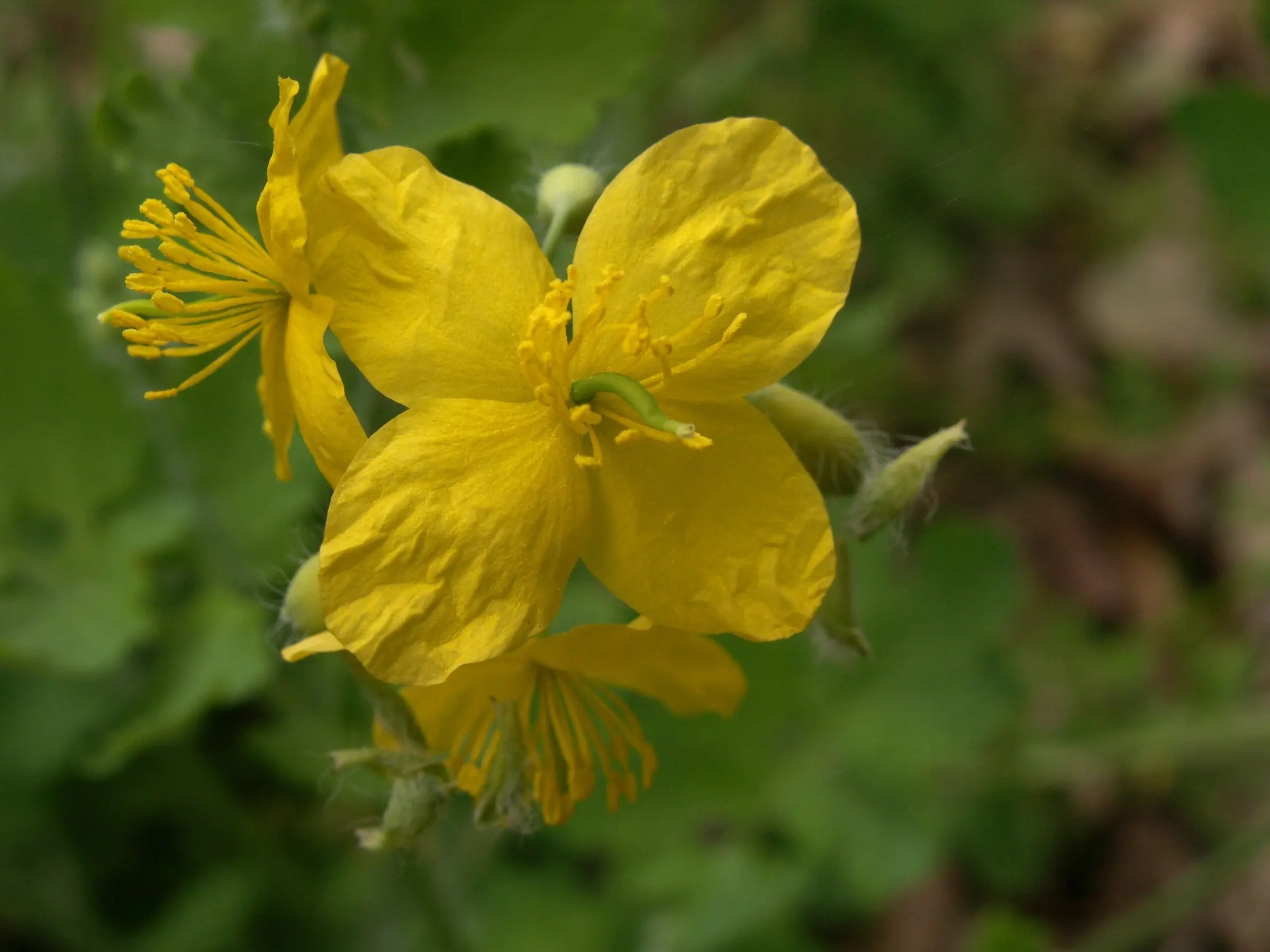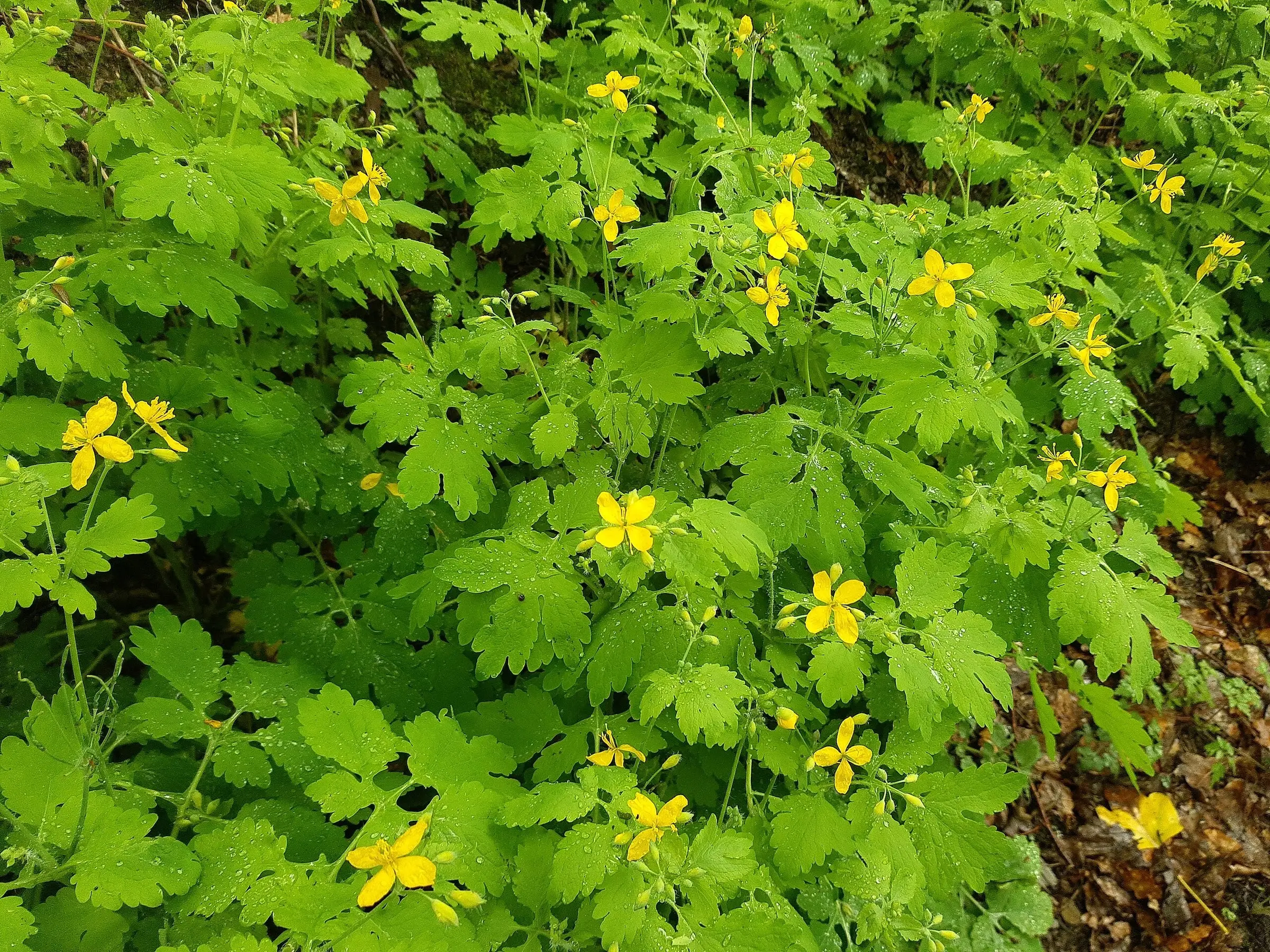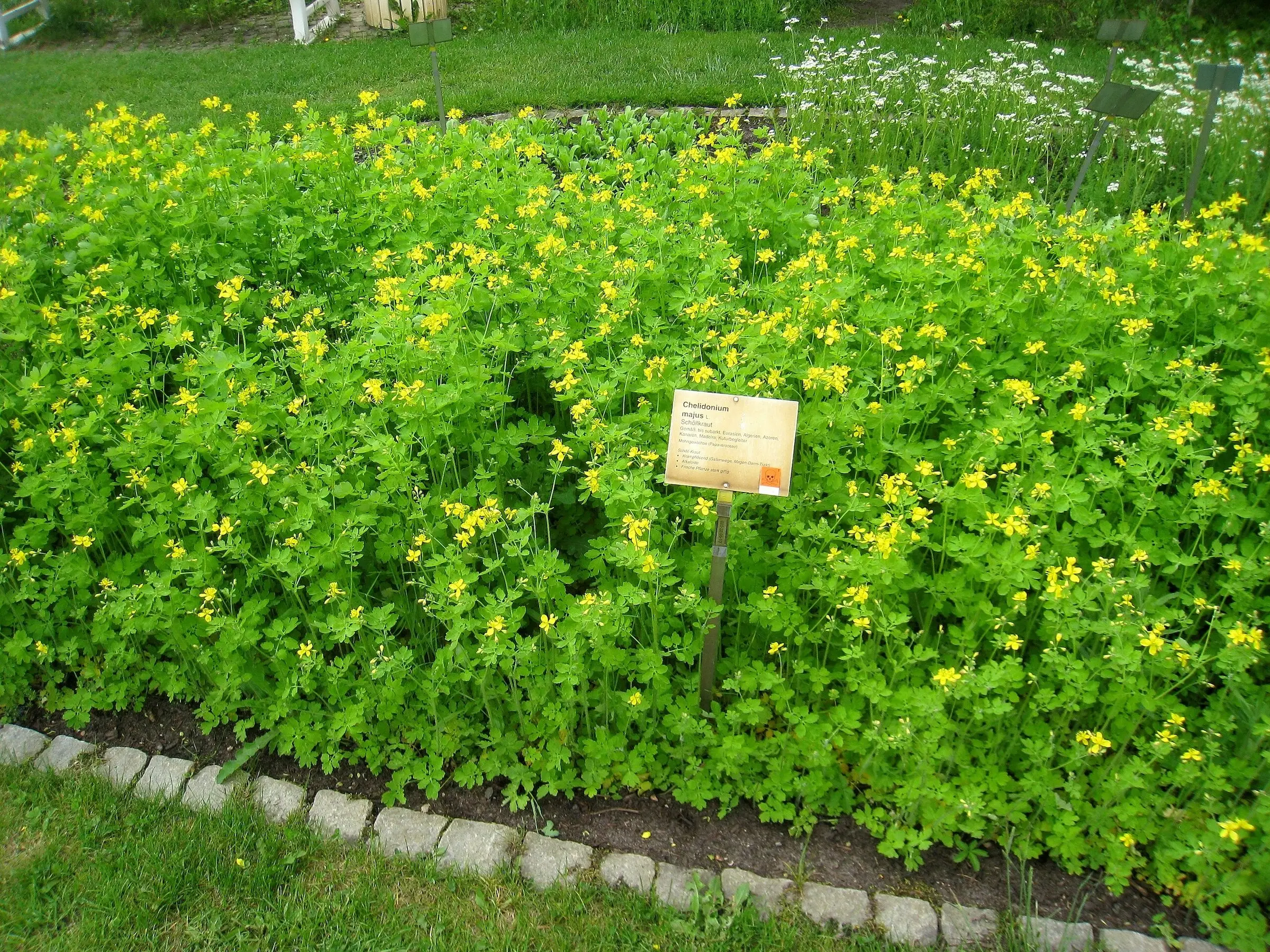
Name
Chelidonium majus, Greater Celandine, Tatterwort, Rock Poppy
Description
An erect growing plant with leaves that are deeply divided. Sap is bright yellow. Flowers are yellow and made up of four petals. Seeds are small, black and attract ants for distribution.

Concern Level
Only during drought conditions, unpalatable.
Toxic Parts
Toxicity mainly concentrated in the roots.

Symptoms
Gastrointestinal irritation, bloody diarrhea, lack of coordination, loss of consciousness, coma.
Danger
Contain isoquinoline alkaloids which can be fatal.

More Information
*It should be noted that we are not veterinarians. This information is written specifically for horses and should be used for reference purposes only. If you think your horse has eaten something toxic call your vet right away.